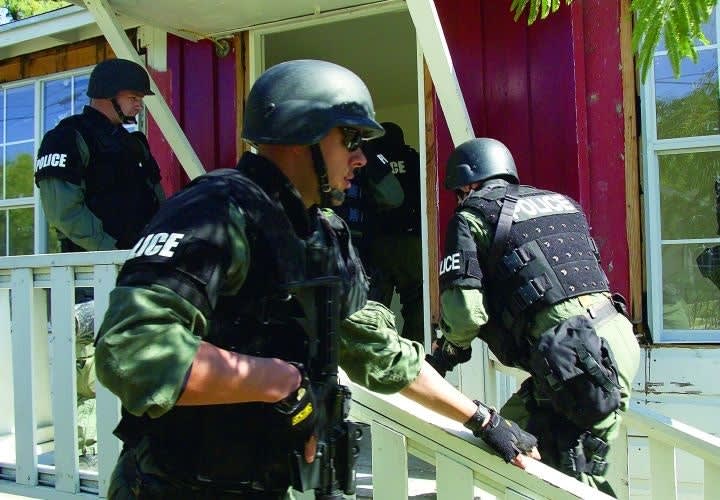Examining the totality of the facts and circumstances in the Blair case, it was objectively reasonable for Sgt. Troy Burnett to shoot and kill Blair. Officers who participated in the search were wearing uniforms labeled police. They announced their presence by yelling, "Police search warrant" twice before they entered the home.
Instead of surrendering to the men he must have realized were officers, Blair lurked in a hallway, brandishing a golf club. The officers passed through the living room and were about to enter the hallway when Sgt. Burnett, the lead officer, saw Blair. An officer in Burnett's position reasonably could have concluded that Blair posed an immediate threat because Blair was close enough to strike Burnett with the club.
Furthermore, Blair was an alleged meth user and allegedly had been involved in domestic violence. Experienced officers understand that people under the influence of drugs are more likely to commit an assault. The level of force used by Burnett was objectively reasonable.
Though the shooting was legally justified, if the officers involved in the raid had engaged in more careful planning, Blair's death may have been prevented. Officers had been watching Blair and his associates for months. They could have waited to search the home, when they knew it was empty. And they should have followed their usual department protocol, having an in-office briefing before the raid. Also, it's debatable whether the facts and circumstances of this case justified a no-knock warrant.
Judges can authorize no-knock warrants if law enforcement officers articulate reasonable suspicion that knocking and announcing would be futile, dangerous, or would inhibit the investigation. In the Blair case, the destruction of evidence was the rationale for issuing the no-knock warrant. If instead of conducting a dynamic entry, the officers had knocked, identified themselves, announced that they had a search warrant, demanded entry, and then waited a reasonable time for Blair to open the door, Blair may have come to his senses and surrendered peacefully.













